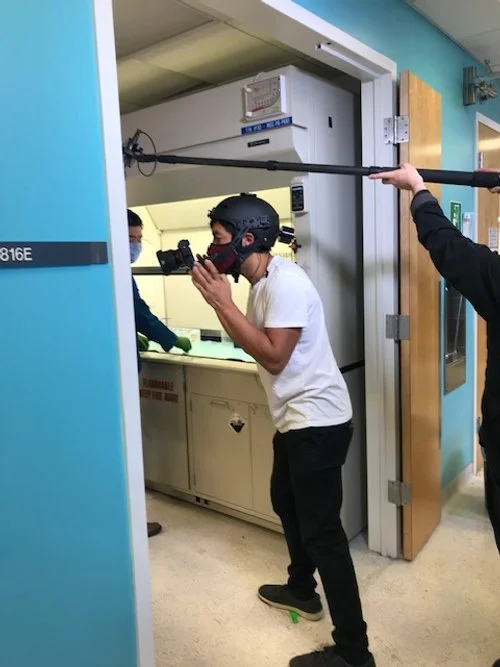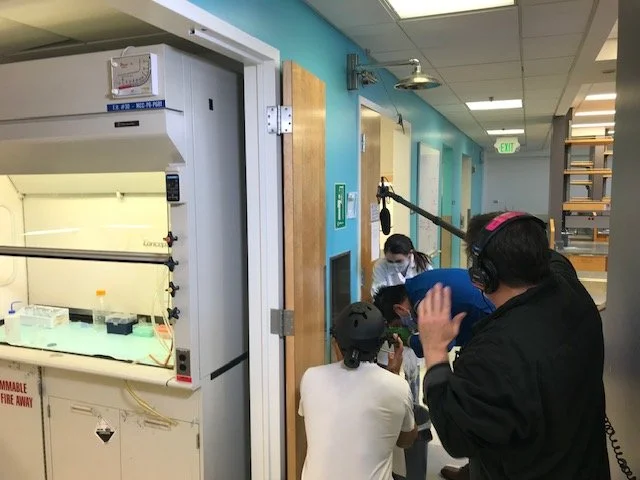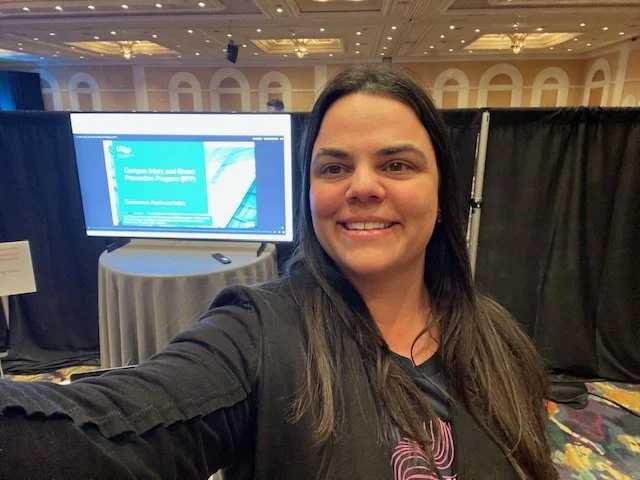Overview
A dense, text-heavy PDF was transformed into a story-driven eLearning experience centered on workplace safety and real-world decision-making.
Common user mistakes gathered from SMEs were woven into authentic scenarios, resulting in relatable, memorable stories that made the training more impactful and engaging.
Audience
Targeted towards all new campus employees during their first month on the job.
Responsibilities
Collaborated with SMEs to define instructional goals and mine stories from injury reports
Wrote & edited screenplays for each scenario video
Designed branching scenarios grounded in real incidents
Developed in Articulate Storyline with accessibility features from the ground up
Coordinated filming production and casting of actors for course videos
Iterated course based on learner feedback and SME input
Toolkit
Storyline 360
Miro
Photoshop
Premiere Pro
Adobe XD
Problem
New and existing employees were unclear on how to report injuries and illnesses or access resources, and communication between staff and managers was limited. Managers wanted employees to feel safe reporting issues without fear of retaliation.
The core challenge was to reduce workplace injuries by replacing disengaging, text-heavy PDFs with an interactive, meaningful learning experience that made information easy to find and inspired real behavior change.
Solution
Working hand-in-hand with subject matter experts, we identified the core goal—reducing workplace injuries and Illnesses while increasing proper reporting and communication between direct reports and their managers. Using action mapping we built a scenario-based Storyline course that:
Leverages real injury report analysis to craft compelling, practical narratives.
Places learners in realistic decision-making scenarios with consequences tied to safety outcomes.
Adds authenticity by featuring familiar colleagues as on-screen actors, strengthening engagement and relatability.
Instructional Design Process
Kickoff Meeting with SMEs
I launched the project by bringing all SMEs together—program managers from EH&S, the director, Labor and Employee Relations, and Ergonomics.
During the kickoff, I led an action mapping session to help the team define the project goal and pinpoint the behaviors learners needed to adopt. Partnering with LER, I incorporated real injury and illness reports as case examples.
These insights informed the design of realistic, interactive activities, while a carefully crafted screenplay ensured a clear narrative flow and authentic scenarios.
Bringing Scenarios to Life
The course was designed as a story-driven experience with visual layouts that mirrored realistic environments and situational cues. Colleagues volunteered to act in the scenarios, bringing authenticity and energy that made the training more personal and engaging.
To ensure technical accuracy, SMEs such as lab inspectors and ergonomists were closely involved throughout production. I coordinated the volunteers, video shoots, and location scouting to bring these stories to life.
Visuals Design + Accessibility
Accessibility was prioritized from the start. The learning experience was intentionally concise, with clear navigation and media controls designed to support diverse learner needs.
Closed captions, audio descriptions, manual play options for screen reader users, and downloadable transcripts ensured inclusivity without sacrificing engagement. Interactive checkpoints reinforced key concepts, while branching pathways let learners experience the real-life consequences of their choices.
To expand access even further, the course was translated into Chinese and Spanish, breaking down language barriers and reaching a broader audience.
Results and Feedback
Implementation:
Deployed through the company’s LMS with over 22,000 completions across campus and a 4.5/5 rating. The course was translated into Chinese and Spanish reaching even more audiences in their native language. I worked to translate all on-screen course elements, captions, and transcripts for the Spanish version.
Evaluation:
Following delivery, performance change will be measured by tracking incident and near-miss reports over time, with the goal of reducing workplace injuries and reinforcing a stronger culture of safety.
Learners praised the course’s concise format, meaningful interactions, and immersive real-world decisions.
Feedback indicated the training succeeded in being “an experience that resonated and led to actionable takeaways.”
Presenting project at DevLearn’s DemoFest
“This was literally my favorite training module. The videos were informative and I love the silent “employee” style with nodding and pointing. This module was actually fun to watch...and no coffee needed to get through it.”






